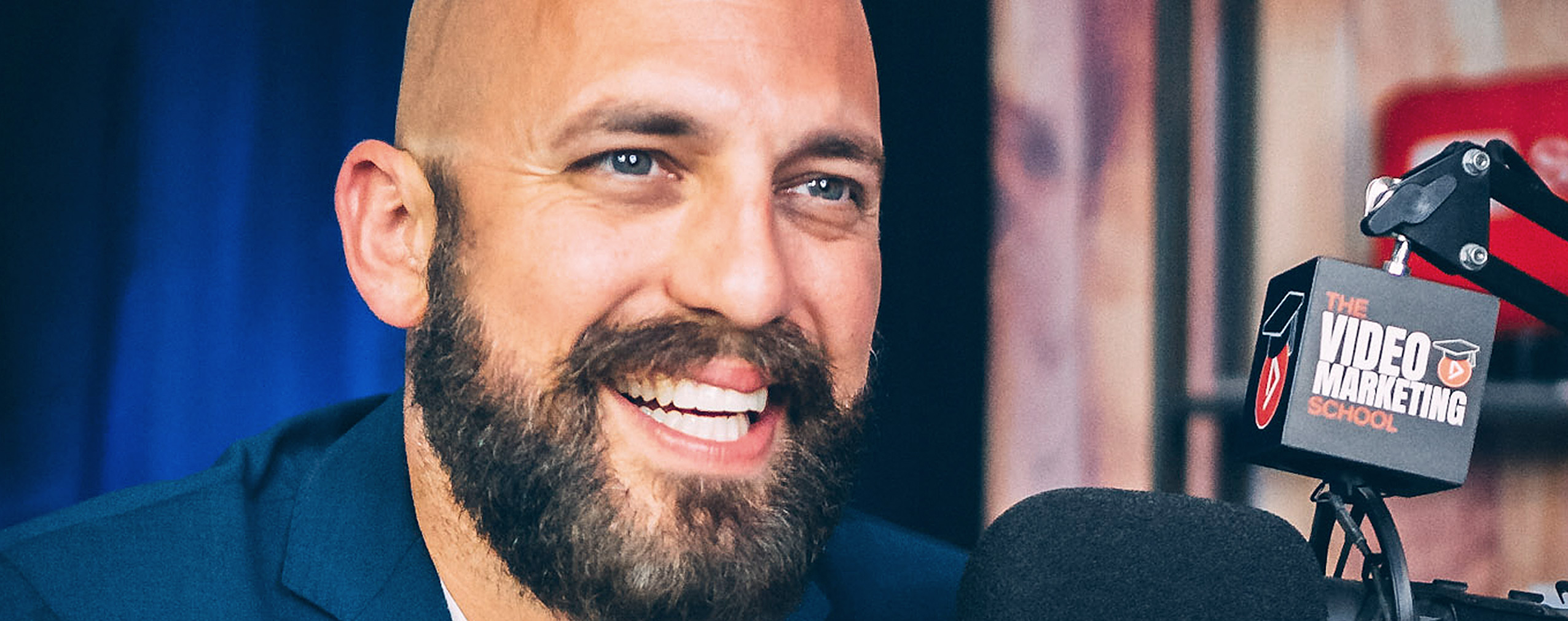Content marketing is nothing new. Companies have been using it for more than a century to help promote their products and services. But in the last decade or so, content has taken over the internet. Just about every organization is using it to market itself better.
In this edition of Webinar Glossary Close-up, we will answer these questions. What is content marketing? Why are webinars the ultimate content marketing channel? How to create valuable webinar content? Let’s get started!
Table of Contents
What is Content Marketing?
According to the well-respected leader in its field, Content Marketing Institute, content marketing is, “a strategic marketing approach focused on creating and distributing valuable, relevant, and consistent content to attract and retain a clearly-defined audience — and, ultimately, to drive profitable customer action”.
Content is anything your company creates to educate, entertain, or draw interest from its audience. The blogs your team writes, the videos you film, social media posts, free eBooks, webinar events — it’s all content. It has been proven that content is be a better marketing strategy than pitching products and services to random leads.
Take a look at these content marketing stats:
-
91% of B2B companies use content marketing while 60% of B2C marketers are committed to it. Such a large percentage of businesses wouldn’t be using this medium if it wasn’t effective.
-
72% of marketers say that content marketing increases customer engagement and the number of qualified leads.
-
95% of web users only look at the first page of search engine results. Since great content is vital to higher search engine listings, content and SEO are linked.
If you take a moment to think about it, you’ll see that content marketing is all around you. Even giant corporations with enormous marketing budgets can’t solely rely on T.V. commercials anymore. Well-known brands like American Express, IBM, and Marriott have all embraced content marketing.
Why Webinars are the Ultimate Content Marketing Channel
Webinars are a particularly effective content marketing channel. This has been proven in ClickMeeting’s latest State of Webinars report. Our deep dive into this marketing medium revealed a few interesting facts, such as:
-
87% of businesses now use video as a marketing tool. Webinars are one of the most effective ways to capitalize on the video craze.
-
81% of marketers claim that video helps them acquire new leads for their companies.
-
79% of people admit that a brand’s video has convinced them to buy a product.
-
Webinars are especially effective for B2B companies as 66% of B2B buyers prefer to watch a webinar before buying a product.
As you can see, these stats prove that webinars are an effective form of content marketing. They allow businesses to easily educate their audiences, showcase products to them and build relationships with potential buyers. Also, webinar content keeps viewers engaged for longer — an incredibly important fact in our fast media, social content world.
In the next section, we’ll discuss how to create valuable webinar content.
How to Create Valuable Webinar Content
There are a thousand ways to create “valuable webinar content.” Below you’ll find the pillars of any successful webinar content marketing initiative. If you and your team can embrace our webinar cycle, gain a firm understanding of your unique audience, invest in the right webinar tools, and optimize your content for success, you’ll be able to effectively use webinars to grow your business.
Let’s take a more in-depth look at each of these tips.
1. Embrace our webinar cycle
The webinar cycle is based on a concept that was originally developed and presented by Rand Fishkin, the founder of Moz. In 2013, Rand and his team realized that the traditional marketing funnel’s linear approach to acquiring leads and converting them into customers wasn’t well suited to the modern digital landscape.
So they developed a new method and called it the Marketing Flywheel, which HubSpot adopted and modified a few years later.
In 2019, inspired by both concepts, we’ve adjusted the flywheel idea yet again — this time for webinar marketers. The method involves eight unique phases which can be broken down into two main categories: sharing knowledge and automation processes.
Let’s take a quick look at each phase:
Create Content
Great content is the backbone of our webinar scenario Without interesting content, your webinar efforts, or entire content marketing initiative, will fail.
But how do you create great content? Understand your audience to deliver information that will be interesting and relating to your company. For example, a protein supplement company could create webinar content about exercise routines performed at home.
This kind of information would be appreciated by folks who have an interest in protein supplements and ties in perfectly with the company’s product offerings.
Automate
In the world of webinars, automation is key. On-Demand Webinars will allow you to save loads of time, as will pre-scheduling emails, social media posts, and more. And since time is your most valuable asset, automation is an important element too. By choosing the right webinar tools, you’ll be able to reach more potential buyers. Win!
Share Content
This, as we say, is the moment of truth. When you release your webinar content, invite prospects, or promote it on social media. This phase is more than reaching potential buyers and turning them into customers. It gives you the chance to learn more about your audience and improve your future webinars.
Qualify Leads
After you’ve created a webinar and your audience has watched it, it’s time to analyze your webinar statistics and draw conclusions. Which kind of content performed best and why? How many new leads did you acquire?
Make sure to track all qualified leads and add them to a specific group inside your CRM software of choice. These are prime targets to market your company’s products to in the future!
Convert
The convert phase is all about your webinar’s call to action, also known as a CTA. A CTA is when you ask your audience to perform a specific action. It could be downloading another piece of content or purchasing a product. But every webinar should end with a CTA that drives traffic to a landing page on your company’s website.
The convert phase is also the perfect time to send out a post-webinar survey and learn more about your audience. Don’t let this opportunity go to waste!
Personalize
Personalization is the name of the game. Your customers don’t want to just purchase products. They want to develop relationships with the brands they support and buy from. This means you need to work hard to build bonds with both potential buyers and current customers. If you don’t, you won’t make nearly as many sales. Your customer base will quickly start supporting another company that prioritizes personalization.
Engage
The engage phase has to do with customer service. The better service you provide to your audience, the more success your webinars will see. Fortunately, creating winning customer experiences isn’t rocket science. Create great webinar content that helps your viewers achieve their goals and they’ll happily engage with your brand.
Grow
Every other phase in the webinar cycle has led to this moment. If your audience has a great experience watching your webinars and learns something valuable from them, they’ll give your company their loyalty and endorsement. You need to capitalize on this vote of trust. How? By giving your viewers the chance to spread the word about your brand.
Ask them to share their love for your company on social media, to write reviews, and record video testimonials. If you can get people talking about your company in a positive way, you’ll start to see radical growth!
2. Know Your Audience
The webinar cycle only works if you understand who your company’s ideal target audience is. You could have the greatest product in the world and create engaging webinar content to help sell it. But if you show your webinar to the wrong folks, you won’t find success.
Have you defined this all-important group of people yet? If not, today is the day! You’ll want to ask yourself questions such as:
-
Who did we have in mind when we created our products and/or services?
-
Do our current customers love our products and/or services? If so, what do they love about them?
-
What problem(s) do our products and/or services solve for our customers? Are there any common threads here?
These questions are a start. Dig deep and try to learn who your ideal audience is. Remember to collect demographic details like the gender, ages, occupations, and income levels of your audience. You can then assimilate this knowledge into a buyer persona which will assist your marketing efforts moving forward.
3. Invest in the Right Tools
To take full advantage of the webinar cycle and invest in the right webinar tools. That way you can create content your audience will engage with and automate various processes to save time.
To host exceptional webinars, look for a webinar platform that offers the following features:
-
The way your webinar looks will play a significant role in whether it’s successful or not. The best webinar platforms equip businesses with custom branding tools to make their webinar room, registration page, and waiting room reflect their company’s unique personality and values. Look for a tool that gives you complete control over the aesthetic of your webinars.
-
Record and Stream Capability. Live webinars will likely be the foundation of your webinar content marketing strategy. Record your live sessions and turn them into On-Demand Webinars that work for your company 24/7.
On a related note, the best webinar tools also integrate with Facebook and YouTube and allow users to stream their live events on these channels as well. It’s just another way for your company to expand its reach.
-
Worthwhile Integrations. Make sure your webinar platform of choice syncs with the other marketing tools you use. For example, ClickMeeting integrates with Google Analytics, Salesforce, HubSpot, PayPal, Slack, and more!
-
Paid Webinars. We recommend choosing a webinar platform that will allow you to offer paid webinars. While this isn’t a strategy that every company will use, it’s definitely a nice option to have.
4. Optimize Your Content for Success
Last but not least, no content marketing plan is complete without optimization. You need to constantly evaluate your webinar strategy and look for ways to improve it. Are your viewers connecting with your content? Are they clicking on your CTA? Is a high percentage of your audience becoming quality leads after a webinar?
There’s always room for improvement. We encourage you to evaluate your efforts and look for new opportunities. The better your content is, the smoother your webinar delivery, the more enticing your ending call to action. All these things will only make your content marketing efforts more effective.
Succeed at Content Marketing with Webinars
Webinars are the ultimate content marketing tool — especially for companies that operate in the B2B sector. If you’ve been thinking about using this marketing channel to promote your business, just follow the four tips we outlined in this article:
- Embrace the webinar cycle framework
- Know Your Audience
- Invest in the Right Tools
- Optimize Your Content for Success
If you’re still searching for the perfect webinar platform to use, give ClickMeeting a try. Our service is packed with convenient features and will empower you to create winning webinar content that grows your business.








